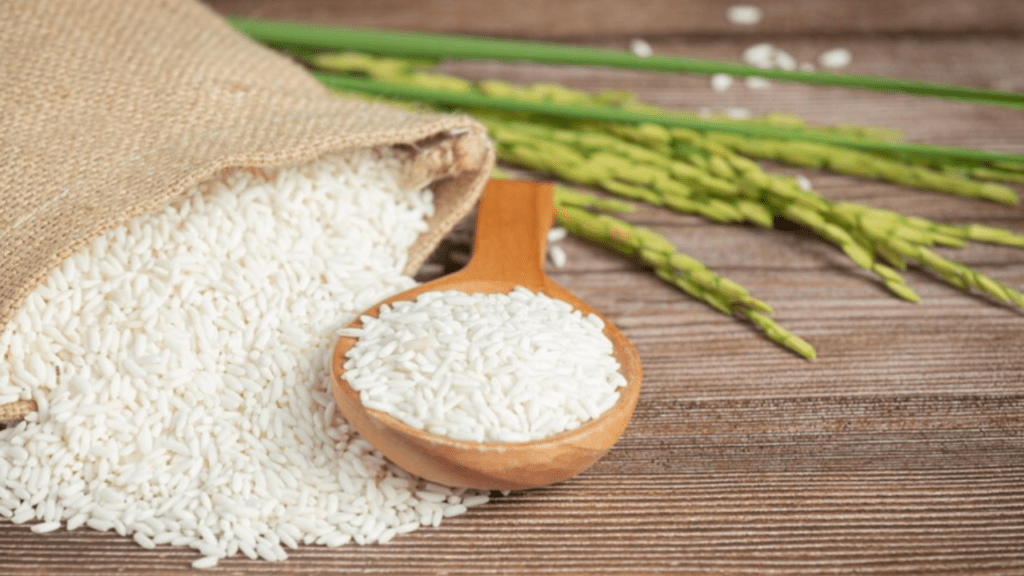
Rice Seeds for Planting: Top Varieties and Expert Growing Tips
Selecting the right rice seeds for planting is crucial for a successful and bountiful harvest. Different rice varieties have different characteristics such as yield potential, disease resistance, and cooking quality. It’s important to choose the variety that best suits your growing conditions and market preferences. Some popular rice seed varieties include long-grain, medium-grain, and short-grain rice, each with its own unique qualities. When selecting rice seeds for planting, it’s important to consider factors such as soil type, climate, water availability, and market demand. Additionally, working with a reputable seed supplier can ensure that you are getting high-quality, certified seeds that will give you the best chance for a successful harvest. Proper seed selection is the first step towards a successful rice crop, so take the time to research and choose the right variety for your specific needs. With the right seeds and proper cultivation practices, you can look forward to a successful rice harvest and contribute to global food security.
When it comes to planting rice, choosing the right seeds is crucial for a successful harvest. There are various varieties of rice seeds available, each with its own unique characteristics and qualities. It’s important to consider factors such as yield potential, disease resistance, and cooking quality when selecting the variety that best suits your needs. Factors like soil type, climate, water availability, and market demand should also be taken into account. It’s advisable to work with a reputable seed supplier to ensure you are getting high-quality, certified seeds. Researching and choosing the right variety for your specific conditions and needs is the first step towards a successful rice crop. With the right seeds and proper cultivation practices, you can look forward to a successful rice harvest and contribute to global food security.
Table of Contents
ToggleUnderstanding Rice Seeds for Planting
When it comes to planting rice, choosing the right seeds is crucial for a successful harvest. There are various varieties of rice seeds available, each with its own unique characteristics and qualities. It’s important to consider factors such as yield potential, disease resistance, and cooking quality when selecting the variety that best suits your needs. Factors like soil type, climate, water availability, and market demand should also be taken into account.
It’s advisable to work with a reputable seed supplier to ensure you are getting high-quality, certified seeds. Researching and choosing the right variety for your specific conditions and needs is the first step towards a successful rice crop. With the right seeds and proper cultivation practices, you can look forward to a successful rice harvest and contribute to global food security.
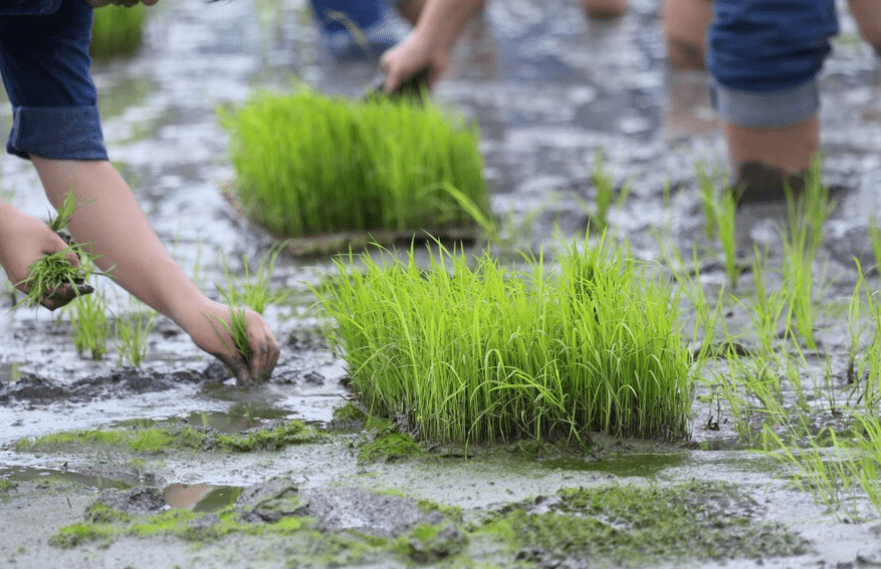
What are Rice Seeds?
Rice seeds are the small, hard-shelled, and grain-like structures that are used for planting and growing rice plants. These seeds are the foundation of a successful rice crop and come in a variety of different strains and varieties. It’s important to choose the right seeds for your specific growing conditions, as different varieties have unique traits and qualities. Factors to consider when selecting rice seeds include yield potential, disease resistance, cooking quality, and market demand. It’s important to work with a reputable seed supplier to ensure you are getting high-quality, certified seeds. This will help ensure a successful harvest and contribute to global food security.
Importance of Choosing the Right Seeds
When it comes to planting and growing rice, choosing the right seeds is crucial for a successful harvest. Rice seeds are the foundation of a successful crop and come in various strains and varieties. It’s important to consider factors such as yield potential, disease resistance, cooking quality, and market demand when selecting the right seeds for your specific growing conditions. Working with a reputable seed supplier to ensure you are getting high-quality, certified seeds is essential for a successful harvest and to contribute to global food security. By understanding the importance of choosing the right seeds and proper cultivation practices, you can look forward to a successful rice harvest and make a positive impact on food security globally.
Types of Rice Seeds for Planting
Long-Grain Rice
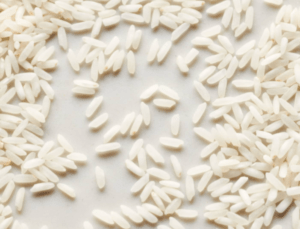
Long-grain rice seeds are a popular choice for planting due to their long, slender grains that stay separate and fluffy when cooked. They are versatile and can be used in a variety of dishes, making them a popular choice for many consumers. When choosing long-grain rice seeds, it’s important to consider their yield potential, disease resistance, and cooking quality to ensure a successful harvest. Working with a reputable seed supplier to obtain high-quality, certified seeds is crucial for growing long-grain rice successfully and meeting market demand. By selecting the right long-grain rice seeds and following proper cultivation practices, you can look forward to a successful harvest and contribute to global food security.
Medium-Grain Rice
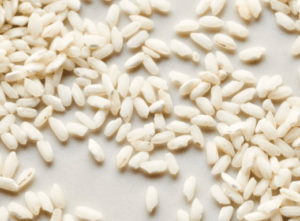
Medium-grain rice seeds are another popular choice for planting, known for their ability to absorb flavors well and stick together when cooked. They are commonly used in dishes such as risotto and paella. When selecting medium-grain rice seeds, it’s important to consider their yield potential, disease resistance, and cooking quality to ensure a successful harvest. Working with a reputable seed supplier to obtain high-quality, certified seeds is essential for growing medium-grain rice successfully and meeting market demand. By choosing the right medium-grain rice seeds and following proper cultivation practices, you can look forward to a successful harvest and make a positive impact on food security globally.
Short-Grain Rice
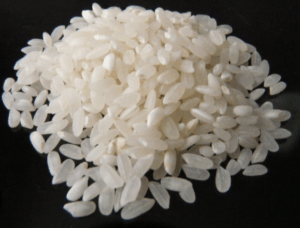
is known for its sticky and soft texture, making it ideal for dishes like sushi and rice pudding. When choosing short-grain rice seeds, it’s important to consider their yield potential, disease resistance, and cooking quality to ensure a successful harvest. Working with a reputable seed supplier to obtain high-quality, certified seeds is essential for growing short-grain rice successfully and meeting market demand. By selecting the right short-grain rice seeds and following proper cultivation practices, you can look forward to a successful harvest and contribute to global food security. Short-grain rice is versatile and can be used in a variety of dishes, making it a popular choice for many consumers. It’s important to choose the right seeds and cultivate them properly to ensure a successful harvest of high-quality short-grain rice.
Preparing Rice Seeds for Planting
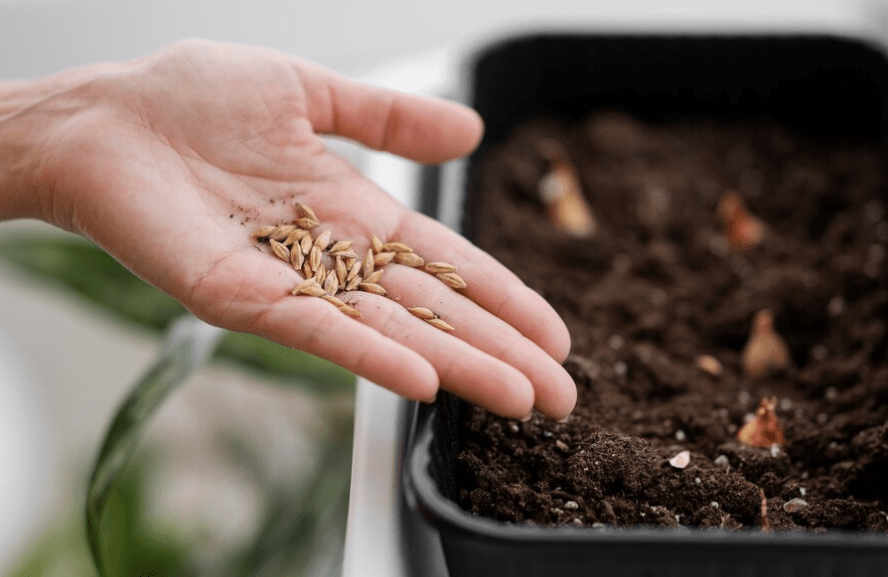
Seed Selection
When selecting rice seeds, whether it’s medium-grain or short-grain, it’s important to consider their yield potential, disease resistance, and cooking quality to ensure a successful harvest. Working with a reputable seed supplier to obtain high-quality, certified seeds is essential for growing rice successfully and meeting market demand. By choosing the right rice seeds and following proper cultivation practices, you can look forward to a successful harvest and make a positive impact on food security globally. Whether you’re growing medium-grain or short-grain rice, proper seed selection and cultivation are crucial for a successful harvest.
Seed Treatment
is an important step in preparing rice seeds for planting. This process helps to protect the seeds from diseases and pests, as well as improve their germination and early growth. Seed treatment can include techniques such as hot water treatment, chemical treatments, or biological treatments to ensure that the seeds are healthy and ready for planting. By treating the seeds before planting, you can increase the likelihood of a successful harvest and ensure that you are contributing to global food security. It’s important to work with agricultural experts to determine the best seed treatment methods for your specific rice crop and to follow proper guidelines for seed treatment to achieve the best results.
Soil Preparation
is another important aspect of growing high-quality short-grain rice. It’s essential to prepare the soil before planting to ensure that the rice plants have the nutrients and support they need to thrive. This can involve activities such as plowing, leveling, and adding organic matter to the soil to improve its fertility and structure. Good soil preparation can also help with water management, as rice plants require a specific amount of water to grow successfully. By taking the time to properly prepare the soil, you can set the stage for a successful rice crop and contribute to the global food supply. It’s important to work with agricultural experts to determine the best soil preparation methods for your specific rice crop and to follow proper guidelines for soil preparation to achieve the best results. With the right seed selection and proper soil preparation, you can look forward to a successful harvest of high-quality short-grain rice.
Planting Methods for Rice Seeds
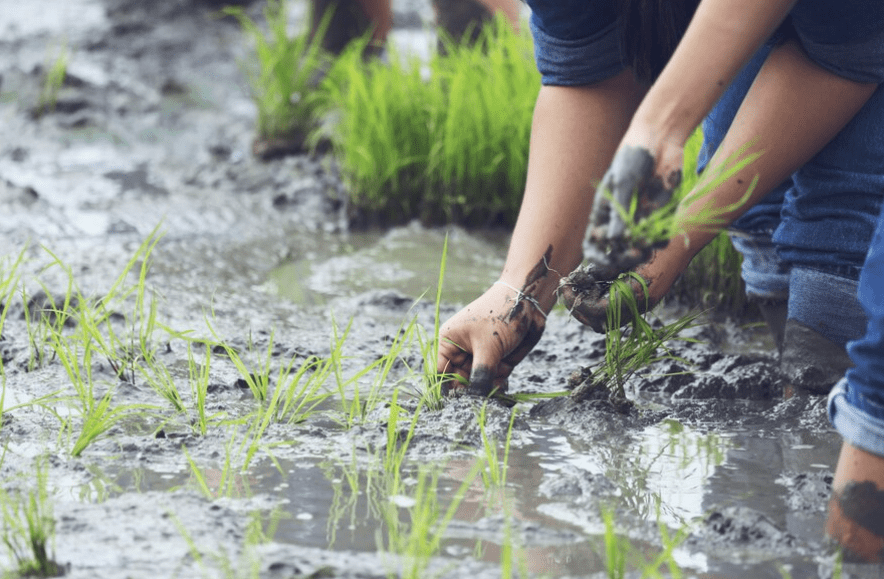
Direct Seeding
is a method of planting rice seeds directly into the field without first growing them in a nursery. This can save time and labor, as well as reduce the risk of transplant shock. It’s important to ensure that the field is properly prepared and leveled before direct seeding, and to use the correct spacing and planting depth for the seeds. By using direct seeding methods, you can increase the efficiency of your rice planting and contribute to global food security by producing more rice with less labor and resources. It’s important to work with agricultural experts to determine the best direct seeding methods for your specific rice crop and to follow proper guidelines for direct seeding to achieve the best results. With the right planting methods, you can look forward to a successful harvest of high-quality short-grain rice.
Transplanting
is another method of planting rice seeds, where the seeds are first grown in a nursery and then transplanted into the field. This method allows for better control over the spacing of the plants and can result in higher yields. It’s important to carefully prepare the seedlings for transplanting and to choose the right time for transplanting to ensure the best results. By using transplanting methods, you can optimize the growth of your rice crop and contribute to global food security by producing high-quality short-grain rice. Working with agricultural experts can help you determine the best transplanting methods for your specific rice crop and ensure a successful harvest. With the right techniques, you can achieve excellent results and make a valuable contribution to the global food supply.
Caring for Rice Plants
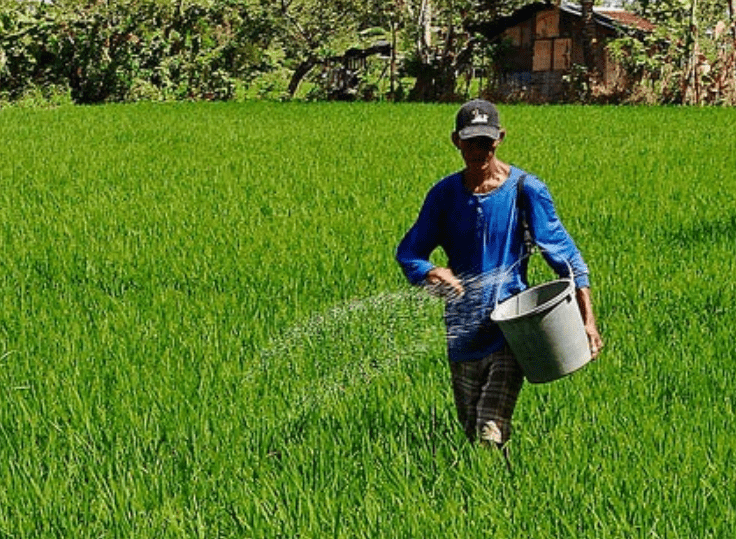
Fertilization
is an important part of growing healthy rice plants. By providing the right nutrients to your rice crop, you can ensure that it grows strong and produces a high yield. It’s important to work with agricultural experts to determine the best fertilization methods for your specific rice crop and to follow proper guidelines for fertilizing to achieve the best results. By providing the right nutrients at the right time, you can look forward to a successful harvest of high-quality short-grain rice. Remember to monitor the condition of your rice crop and adjust your fertilization strategy as needed to ensure optimal growth and yield. With proper fertilization, you can contribute to global food security by producing more rice with less labor and resources.
Water Management
is an essential aspect of growing a successful rice crop. Proper water management can help you maximize the growth and yield of your rice plants while conserving water resources. By using efficient irrigation techniques and monitoring water levels, you can ensure that your rice crop receives the right amount of water at the right time. This not only promotes healthy plant growth but also contributes to sustainable agricultural practices. Working with water management experts can help you design a system that meets the specific needs of your rice crop and ensures efficient water use. By implementing effective water management strategies, you can contribute to global food security by producing high-quality short-grain rice while conserving valuable water resources. Remember to regularly monitor and adjust water levels to meet the changing needs of your rice crop and optimize its growth. With proper water management, you can play a valuable role in supporting global food supply and sustainability.
Weed and Pest Control
are essential components of successful rice cultivation. Weeds and pests can significantly reduce the yield and quality of your rice crop if not properly managed. Implementing effective weed and pest control strategies can help you minimize losses and maximize the productivity of your rice fields. By using integrated pest management practices, such as biological control and selective herbicides, you can effectively manage weeds and pests while minimizing the impact on the environment. It is important to regularly monitor your rice fields for signs of weed and pest infestations and take appropriate measures to address them. By implementing sustainable weed and pest control practices, you can contribute to global food security by producing high-quality rice crops while minimizing the use of harmful chemicals. Working with agricultural experts can help you develop a comprehensive weed and pest control plan tailored to the specific needs of your rice cultivation. By effectively managing weeds and pests, you can play a vital role in supporting sustainable agriculture and food production.
Benefits of Growing Your Own Rice
Cost Savings
When you grow your own rice, you can actually save a lot of money. Buying rice from the store can add up over time, but growing your own rice can significantly reduce your grocery bill. Not only that, but you can also ensure that the rice you are consuming is free from any harmful chemicals or pesticides. Additionally, growing your own rice can be a sustainable and eco-friendly option, as you can reduce the carbon footprint associated with transporting rice from farms to stores. By growing your own rice, you have more control over the quality and cost of the rice you consume, making it a cost-effective and sustainable choice.
Quality Control
is extremely important when it comes to agricultural products like rice. By implementing sustainable weed and pest control practices, you can contribute to global food security by producing high-quality rice crops while minimizing the use of harmful chemicals. Working with agricultural experts can help you develop a comprehensive weed and pest control plan tailored to the specific needs of your rice cultivation. By effectively managing weeds and pests, you can play a vital role in supporting sustainable agriculture and food production. Additionally, growing your own rice can provide cost savings as you can reduce your grocery bill and have more control over the quality and cost of the rice you consume. This can also be a sustainable and eco-friendly option, as it reduces the carbon footprint associated with transporting rice from farms to stores.
Sustainability
is a key consideration when it comes to food production, and growing your own rice can be a sustainable choice. By growing your own rice, you can ensure that it is free from harmful chemicals and pesticides, contributing to a healthier and more sustainable food system. Additionally, you can reduce the carbon footprint associated with transporting rice from farms to stores, making it an eco-friendly option. By implementing sustainable weed and pest control practices, you can contribute to global food security and support sustainable agriculture. Overall, growing your own rice can be a cost-effective and environmentally friendly choice for sustainable food production.
In conclusion, when it comes to planting rice seeds, it’s important to choose the right variety for your climate and growing conditions. Whether you’re looking for short-grain, long-grain, or aromatic rice, there are many options to choose from. Additionally, following expert growing tips such as proper soil preparation, watering, and fertilizing will ensure a successful rice harvest. With the right seeds and knowledge, you can enjoy a bountiful rice harvest in your garden or farm.
Frequently asked questions And Answer
Some of the top varieties of rice seeds for planting include Jasmine rice, Basmati rice, Arborio rice, and Koshihikari rice.
Rice seeds should be planted in well-drained soil with plenty of sunlight. It’s important to keep the soil consistently moist, but not waterlogged. Additionally, rice plants benefit from the use of fertilizer to promote healthy growth
Yes, rice seeds can be grown in a home garden, particularly in areas with a warm climate and plenty of sunlight. It’s important to choose the right variety of rice seeds for your specific growing conditions.
The time it takes for rice seeds to grow into mature plants varies depending on the variety, but on average, it takes about 3 to 6 months for rice plants to reach maturity.
Some common challenges when growing rice seeds include pests such as rice weevils, rice blast fungus, and rice stem borers. It’s important to monitor the plants closely and take appropriate measures to protect them from these threats.
Yes, rice seeds can be grown in containers or pots, as long as they have enough space for the roots to grow and are placed in a sunny location. It’s important to use a well-draining soil mix and provide regular watering.
Rice seeds thrive in warm, humid climates with plenty of sunlight. They also require consistently moist soil and are typically grown in flooded fields or paddies.
The best time to plant rice seeds is in the spring, after the last frost has passed and the soil has warmed up. This allows the seeds to germinate and establish healthy plants.
